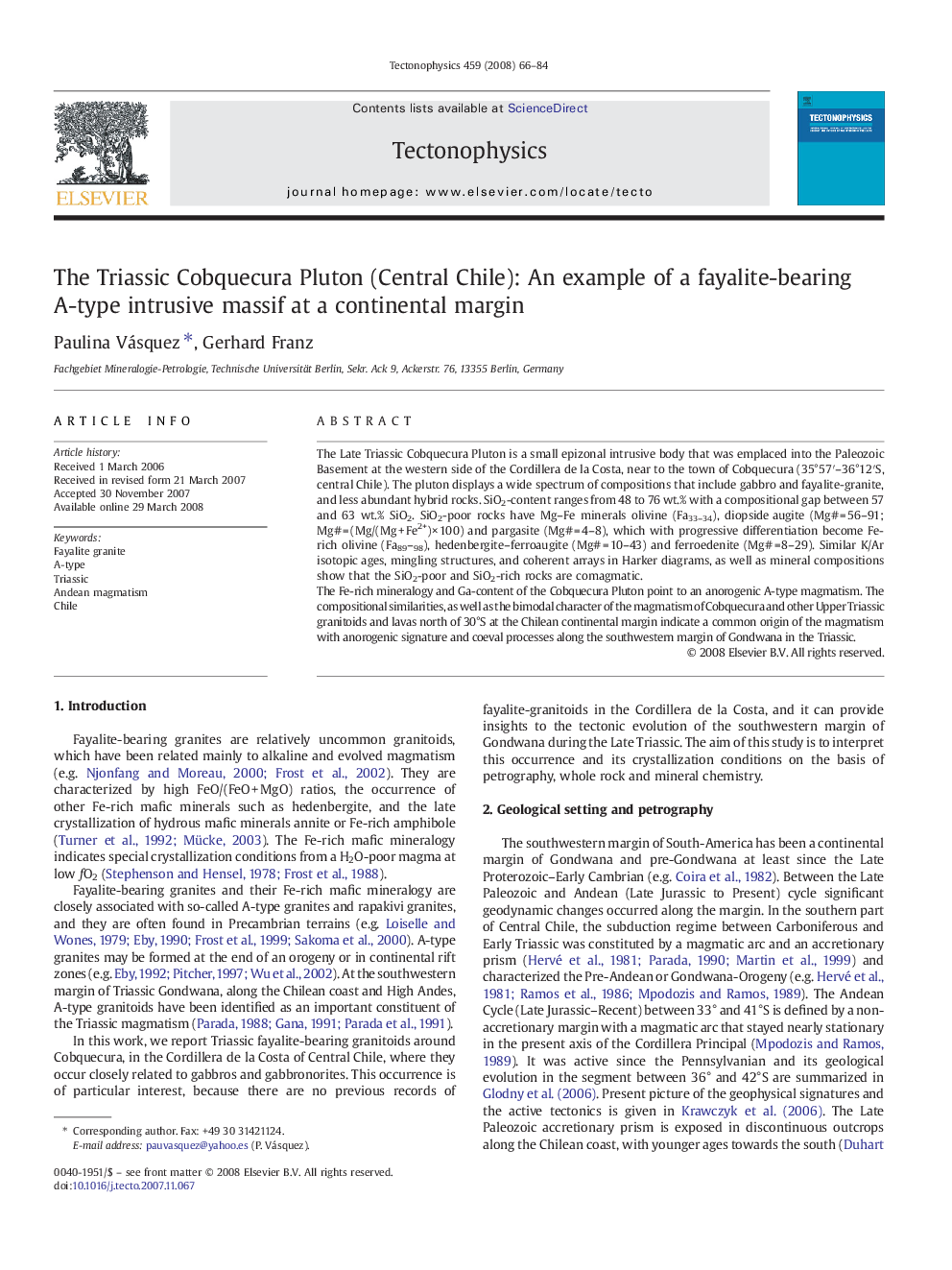| Article ID | Journal | Published Year | Pages | File Type |
|---|---|---|---|---|
| 4694417 | Tectonophysics | 2008 | 19 Pages |
The Late Triassic Cobquecura Pluton is a small epizonal intrusive body that was emplaced into the Paleozoic Basement at the western side of the Cordillera de la Costa, near to the town of Cobquecura (35°57′–36°12′S, central Chile). The pluton displays a wide spectrum of compositions that include gabbro and fayalite-granite, and less abundant hybrid rocks. SiO2-content ranges from 48 to 76 wt.% with a compositional gap between 57 and 63 wt.% SiO2. SiO2-poor rocks have Mg–Fe minerals olivine (Fa33–34), diopside‑augite (Mg# = 56–91; Mg# = (Mg/(Mg + Fe2+) × 100) and pargasite (Mg# = 4–8), which with progressive differentiation become Fe-rich olivine (Fa89–98), hedenbergite–ferroaugite (Mg# = 10–43) and ferroedenite (Mg# = 8–29). Similar K/Ar isotopic ages, mingling structures, and coherent arrays in Harker diagrams, as well as mineral compositions show that the SiO2-poor and SiO2-rich rocks are comagmatic.The Fe-rich mineralogy and Ga-content of the Cobquecura Pluton point to an anorogenic A-type magmatism. The compositional similarities, as well as the bimodal character of the magmatism of Cobquecura and other Upper Triassic granitoids and lavas north of 30°S at the Chilean continental margin indicate a common origin of the magmatism with anorogenic signature and coeval processes along the southwestern margin of Gondwana in the Triassic.
